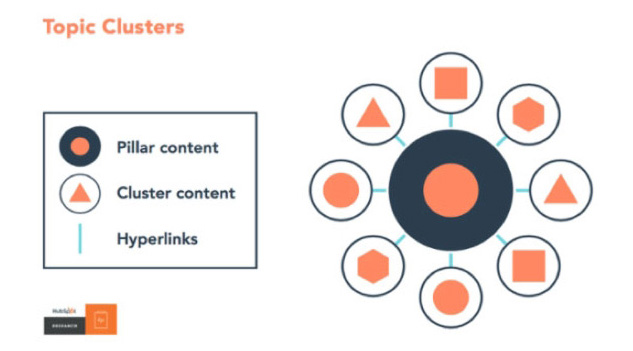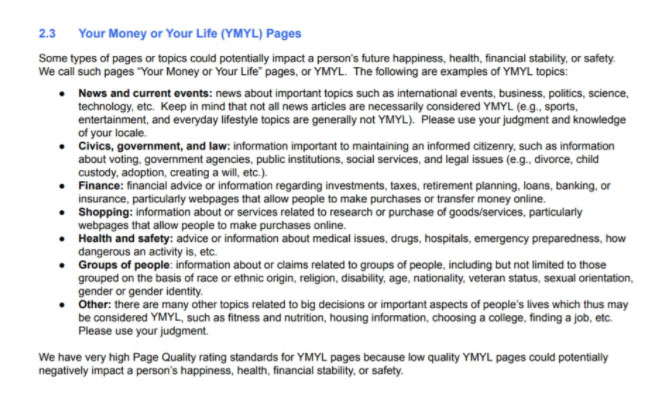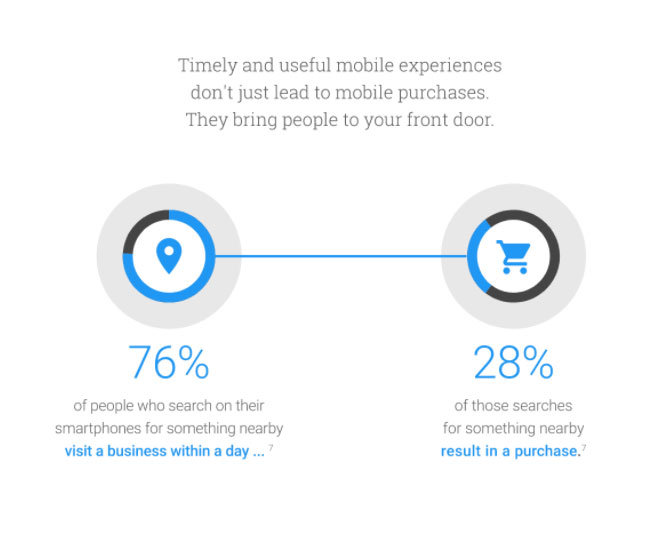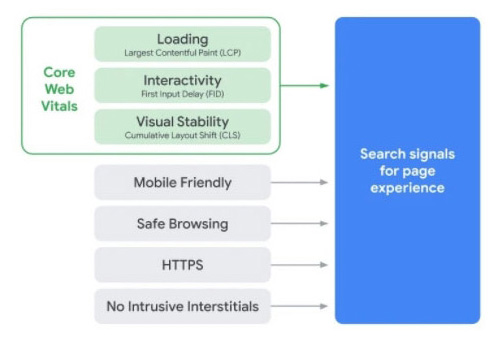7 Tips to Keep up With the Top SEO Trends of 2024

Search engine optimization (SEO) is a constantly evolving marketing discipline that, over the past decade, has witnessed several major changes, from mobile prioritization to knowledge graphs and more.
The frequency of Google’s algorithm updates has also been increasing and with each update, the ranking algorithm is becoming increasingly smarter in determining the quality of content and websites.
Now, established SEO tactics such as guest blogging, link building, and on-page optimization aren’t going anywhere — and you need to continue working on these as you’ve been doing since you first started optimizing your website.
That being said, certain trends occupy centre stage and demand your attention as we move into the new year. So, without further ado, here are the top seven trends of 2024 along with actionable tips to keep up with them.
Leverage Generative AI for Advanced SEO
Generative AI is a current SEO trend that utilises machine learning algorithms in existing data and generates new content based on patterns and trends. This same formula is replicated in SEO where AI algorithms can analyse complex search patterns, user behaviour, and competitor data to provide a foundation for SEO strategies. With generative AI, SEO marketers can prepare more accurate SEO strategies and rely less on guesswork.
Some of the ways generative AI can be integrated into SEO are:
Improving Content: Your SEO strategy is nothing without strong and valuable content. With AI, you can analyse internal and external search behaviours and sales data to identify emerging trends and utilise that in elevating your content strategy. You can enhance your keyword research strategy by using generative AI to know the trending keywords and the best fits according to your website and context.
Better Data Analysis: Using generative AI data, you can better understand and analyse engagement data such as page views, time spent on pages, and the key to winning page types. You know how users interact with your content and what best captures their interest. Generative AI also helps you detect user behaviour patterns on the website such as frequently browsed sections, site exit points, etc.
Enhancing Keyword Research and Strategy: Generative AI can analyse vast amounts of keywords and identify the relevant keywords and phrases that have high search volumes and low competition. This can change and elevate the whole content strategy since you can target keywords that have the best chance to drive organic traffic to your website. You also understand what keywords work best for different customers based on their point of purchase and create personalised content based on the same.
Understand Semantic Search
There was a time when SEO professionals used to focus on keywords as if that’s the only thing that mattered. A decade back, they weren’t entirely wrong but today, keywords are just a piece of the puzzle.
“Semantic search” is a current SEO trend where search engines like Google sift through oceans of web pages and data in their index and use AI to determine the context, intent, and meaning behind a search query. It is how they serve the most relevant results possible.
Think about it — if Google expects a top-notch user experience from your website, then the same applies to them. They too want to be able to deliver the best search experience possible by allowing people to quickly find the most relevant results using natural language search terms.
As you can probably guess, optimizing for semantic search boils down to how and why your audience searches. It’s about understanding what answers, information, products, or experiences they’re looking for.
Here’s what you must do when it comes to semantic search:
Create content that answers your target audience’s questions. Think frequently asked questions — in a Q&A format — but super in-depth. You might dedicate entire pieces of content to one specific question, answering the question at the top of the piece (“What is natural language processing,” for instance) before diving into the full details.
Write for humans, not search engine bots. In other words, create content that is to the point, concise, and written in easy-to-understand sentences. No fluff for the sake of word count. Use subheadings and bullets that make it easy for people to skim and find the information they need.
Use structured data if it makes sense. Using a product, question, article, ratings, or review schema helps search bots better understand your pages and translates to a more clickable search result for the users.
Strive for contextual internal linking on your website. Internal linking is not just about linking various pages on your site to each other whenever you fancy. Do it strategically to create a well-structured map of related content around a central topic or search term (aka the topic cluster model ).
So, create content meant to answer questions that your target audience would pose. Optimize content for topic clusters rather than getting hung up on keywords. Use structured data when it makes sense. And above all, don’t write for bots but for people.

Nail E-E-A-T and Content Quality
By now, you’re aware that ranking high on Google is synonymous with providing an excellent user experience and the content you publish on your website is no exception.
After all, the quality of your content ties strongly to the user experience on your website. So whether it’s 2020, 2024, or beyond — “content is king” is an adage that won’t change.
But what does quality content mean, exactly? Do you recall the E-A-T principle? It was the acronym for expertise, authority, and trustworthiness. However, Google improvised this acronym and brings us to the future SEO trend — E-E-A-T where the additional E stands for experience. While these don’t directly fall into the ranking factors, they do outline the quality guidelines that determine whether the search engine results have high-quality and relevant information.
These four factors that if a web page has quality content or not. This principle is particularly important if your website falls under the “Your Money or Your Life” (YMYL) category, such as financial or medical advice.

Let’s quickly take a look at the four factors of E-E-A-T:
Experience: Google added the experience parameter to ensure content enhancement, especially for the readers. They need to know whether the content is based on first-hand experience with the subject being covered. For example, has the fashion blogger personally tried the online retail clothing store? Has the travel blogger personally visited the places they’re writing about?
Expertise: Your content should ideally be created by subject matter experts, be it you or a hired professional. You don’t want to provide inaccurate or outdated information that may affect people’s well-being negatively.
Authority: Prove your page’s authoritativeness with links and mentions from quality websites in your industry. The more citations you earn, the more authority you build.
Trustworthiness: Google wants to rank websites and content that it can trust. Boost your trustworthiness by highlighting the credentials of your content creators and the people behind your website. Think reviews, awards, testimonials, endorsements, and other trust factors.
Now, there are a few things you can do to ensure you nail your content quality:
Understand your buyer persona: Get to know your audience, their wants and needs, objections, and pain points. This is how you can create content that’s actually valuable.
Conduct search intent research: We’ve already discussed how search intent is important, but it’s worth mentioning again. Analyze the search phrases that bring people to your website. Understand what your visitors are looking for to create content that aligns with their intent.
Create content in the formats your audience prefers: Sure, publishing long-form blog posts, and text-based content is still important to rank high on Google. But what if your target audience prefers more visual content, such as vlogs and tutorials? For optimal user experience, create the type of content that your audience prefers.
Moreover, back up your claims with recent statistics and facts from reliable sources. Ensure your content is thorough, well-researched, engaging, and original. Link to reputable sites, such as ones with “.edu” and “.gov” URLs. Finally, build links back to your content from authoritative publications.
Optimise Local SEO
Local SEO is growing fast as more than 30% of mobile queries are related to location. Mobile searches for “near me” (for example, “bookstore open near me”) have grown by over 250% from 2017–2019.

Local SEO has faced a lot of changes in the past few years. Google My Business became the Google Business Profile where the focus is getting richer local results for search engine users. As a local business owner, you need to focus on optimising your Google Business Profile by choosing the right categories, engaging descriptions, adding appealing photos, and accurate business hours.
Set up Reviews System: The majority of consumers searching for local businesses, check reviews before finalising a decision. Allow your customers to easily leave reviews and make sure you engage with them to build a positive rapport with your customers. Reply to their complaints if any and thank them for a good review. Use tools that help you scale 5-star reviews.
Activate Social Media Presence: As a small local business, social media is probably the last thing on your mind. But a social media presence helps form your credibility and instils trust in the minds of the consumers. Add details on your social media handles like location and business hours, and keep the content personalised and engaging enough for the users.
Local Schema Markup: Schema markup helps search engines like Google comprehend and index your site. To ensure schema markup, just ensure you add all the correct information like location, business hours, and services offered, etc.
Prioritise User Experience
In the eyes of Google, user experience (UX) continues to take centre stage. You’ll notice that most of the top-ranking websites on Google render a compelling user experience, with the page experience update in 2024 that might switch to all top-ranking results.
That’s because Google favours those sites that have great UX and keep visitors engaged. Google recently announced on the webmaster central blog how optimising for the quality of user experience is key to the long-term success of any site on search.
In particular, they introduced a new program “core Web Vitals” to provide unified guidance for quality signals that Google believes are essential to delivering a great UX on the web:
“Core Web Vitals are a set of real-world, user-centred metrics that quantify key aspects of the user experience. They measure dimensions of web usability such as load time, interactivity, and the stability of content as it loads (so you don’t accidentally tap that button when it shifts under your finger – how annoying!).”
Emphasis on user-centred metrics. With these updates to its search algorithm, Google is clearly underlining its increasing focus on “delightful” web experiences for people — fast, intuitive, and accessible experiences across all devices and platforms.
Google is combining the signals derived from Core Web Vitals with existing search signals for page experience, such as mobile-friendliness (discussed later), safe browsing, HTTPS-security, and intrusive interstitial guidelines, to build a holistic picture of page experience.

There’s now a dedicated that you can pull through Google Search Console to understand where your web pages stand from a UX perspective — against all of Google’s UX ranking signals — as well as suggestions on how to improve your UX.
Google plans to incorporate more page experience signals every year to both further align with evolving user expectations and increase the aspects of UX that can be measured.
With this in mind, here are some questions you need to answer about your site:
- Are there any pages on your site that load slowly?
- Do you have pop-ups that, however important to lead generation, are annoying and intrusive for visitors?
- Are there pages that don’t work well on mobile devices?
- Is your website easy to navigate?
- Make sure your site loads lightning fast on all devices, eliminate intrusive pop-ups and interstitials that are super annoying for users, and build a logical site structure with relevant and up-to-date content.
Long story short, SEO trends today go hand-in-hand with providing a great user experience (UX) on your website and how things are shaping, you can almost start calling SEO UXO in the coming years.
Optimise for Voice and Visual Search
Apart from traditional text-based search, voice search has become a new favourite amongst search engine users. Voice search is actively been used for quick fact-check answers, local search and “near me” queries, and other forms of hands-free help. With the rising use of voice assistants, voice search is also making a strong presence in the overall SEO strategy.
To optimise for voice search, you need to include long-tail keywords, aim for featured snippets, optimise local SEO, and use conversational language in your content. The idea is to write how one would talk.
If you’re able to blend conversational terms into your piece, it can allow voice-enabled search engines to find your content piece. Of course, you need to follow these procedures along with the traditional SEO techniques like optimising page speed, optimising site for mobile, and using schema markup.
Visual searches, along with voice search are emerging as an alternative medium for placing search queries on Google. However, visual search is not for everybody. Think about if it will really benefit your company from the effort of optimising your site for visual search. If you offer a product or something that can be photographed, it can help you optimise your search efforts.
In visual search, search engines extensively use AI to identify objects in an image and match those images with similar objects. However, to have the right images, you need to focus on the quality of the image and the surrounding text. Search engines prioritise search results from high-quality sites with original content and pictures. So ensure you have original images and photography instead of stock images.
Optimise for Featured Snippets
With each passing year, Google is trying to position itself as the one-stop-shop for quick and reliable information, and eating up more and more of your organic traffic by showing detailed answers to users’ questions in the SERPs itself.
That is, updates in the algorithm are leading towards more zero-click searches, wherein the user’s query is answered via the SERP itself. No need to waste time clicking through to a website and waiting for it to load.
As of 2019, zero-click searches accounted for over 50% of all Google searches. One reason for the rise in zero-click searches is the increase of featured snippets appearing in search results.
Also known as “position zero”, the featured snippet shows up as a little box that gives the exact answer to the search query, usually in a question format.

The featured snippet is an SEO trend where a snippet is located above the first organic search result, so it’s a great way to outrank even your highest authority rivals with simple tweaks in your content. Most search professionals are aware of the value of featured snippets, but few try to capitalize on them.
So, this is still a relatively untapped opportunity for you to leverage in 2024. Here’s how you can start doing that:
Carry out thorough keyword research and try to answer all question-based search queries in your content with relevant keywords.
Create comprehensive, long-form content and cover all long-tail keywords.
Structure your answers as FAQs, add FAQ Schema, and aim for the optimal word count (featured snippets typically range from 40-50 words).
Not to mention optimizing your content for featured snippets also helps you rank for mobile voice searches — which 27% of the global population is using — because voice searches are mostly done in a question-like format.
Final Thoughts
SEO is no longer a mere game of backlinks, keywords, and text-based content anymore, as this list proves. With each algorithm update, Google is rewarding websites that provide delightful user experiences and penalizing ones that treat UX as an afterthought.
Your best bet in 2024 is to acknowledge this fact, accept the latest trends in SEO and optimise your pages and content for more compelling and engaging experiences. So, understand how generative AI fits into your SEO strategy, prove your E-E-A-T, understand semantic search, optimise Google Business Profile, and finally, create useful content in the format your audience wants.
In a nutshell, shift from a rankings-first mindset to a user-first mindset if you wish to get to the top of the SERPs (and stay there) in 2024 and beyond.
DIGITAL MARKETING FOR ALL OF AUSTRALIA
- SEO AgencyMelbourne
- SEO AgencySydney
- SEO AgencyBrisbane
- SEO AgencyAdelaide
- SEO AgencyPerth
- SEO AgencyCanberra
- SEO AgencyHobart
- SEO AgencyDarwin
- SEO AgencyGold Coast
- We work with all businesses across Australia


